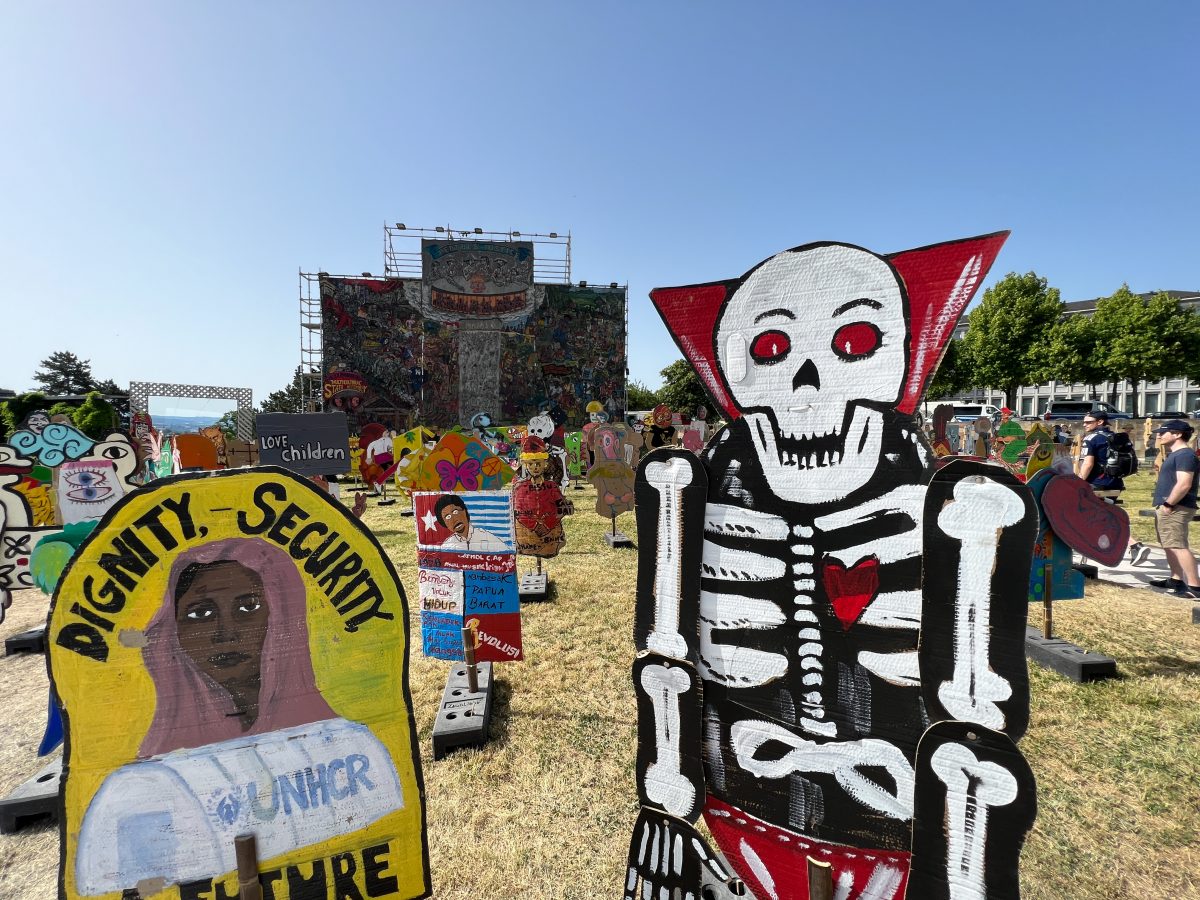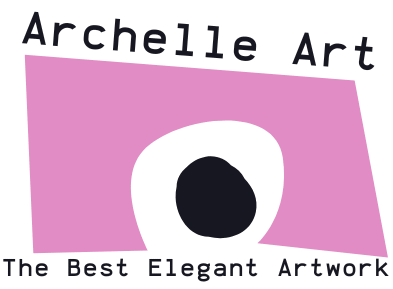KASSEL, Germany — Documenta, arguably the world’s most significant and most significant art function, will the moment once more set the tone for conversations about the present-day and long run states of up to date artwork. For the 2022 Documenta 15 (D15) edition, ruangrupa, an artist collective launched in Jakarta in 2000, took the helm as creative administrators. The central topic of the exhibition is “lumbung,” the Indonesian expression for a communal rice barn, where by surplus items or harvests are stored for long term use and shared by the local community. This agrarian frequent-ist design was set ahead by the curators to “heal today’s accidents, in particular kinds rooted in colonialism, capitalism, and patriarchal constructions.”
When I wrote this article, the controversy encompassing the exhibition with regards to antisemitic imagery was resolved by ruangrupa’s community apology they immediately dismantled the get the job done of Taring Padi’s People’s Justice (2002). This sizeable oversight sadly undermined the central conceptual premises. The incident stresses the simple fact that “progressive” contingencies are not immune to racist, patriarchal, and/or other discriminatory concepts – really the opposite – it need to be a duty to study any agent bigotry and discrimination statements very seriously by taking the area context and sensitivities into account without compromising the core values of independence of speech. This controversy may perhaps be a good speaking issue for the media stores but should really not overpower Documenta’s countless numbers of varied voices this calendar year.

Lumbung is a political project imagined as a cooperative creative and financial model for sharing assets, fair allocation, and equal distribution, which permeates all areas of D15 programming. Even though it is not immediately apparent how the observe of lumbung is various from other common-ist illustrations (rural, anarchist, and/or socialist democratic traditions), the openness of the proposition can be browse as one of the strengths of ruangrupa’s conceptual framework.
D15 is a remarkable gathering of potentialities, a very careful alignment of militant particles, and a sensational patchwork, all at after. It’s also no cost push, skateboard park, dormitory for artists, communal kitchen, greenhouse, and sauna. Collectives, collaborations, choice areas, political jobs, and archives unapologetically occupying D15’s 32 venues and turning them into different sites for understanding creation and dissemination with an abundance of objects and good electrical power. In line with the thought of lumbung, the energy of curating is shared and dispersed the nine-member collective invited 14 other collectives to be “lumbung members” in flip, other artists and collectives were invited, characterizing an ever-growing dynamic array of tasks and thoughts with 1,500 contributors (with just just one American contribution).
Transparency is weaved into D15 the spending budget is similarly distributed, and customers of the lumbung are supplied entry to a shared pool to be utilized in collective determination-making in a “majelis” technique — an Indonesian time period for an assembly. When its corrupt military services dictatorship (New Order) was more than in 1998, Indonesia underwent sweeping reforms, strengthening the People’s Consultative Assembly (Majelis Permusyawaratan Rakyat).
For occasion, a person of the significant exemplars of collectivist experiments is Komîna Fîlm a Rojava (The Rojava Movie Commune), a collective of filmmakers dependent in the autonomous area of northern Syria, showcased in the Fridericianum Museum and the Gloria-Kino theater. The commune explores means to research, find out, and share by the process of filmmaking though addressing the significant concerns of storytelling and inventive creation in a “stateless democracy.”
The Dilemma of Funding (2019), a Palestinian collective composed of artists and organizers, introduced with each other other artist collectives to request out choice economic techniques that can resist the actual physical and geographical boundaries and the crushing limits imposed on Palestine. Inside of the lumbung’s spirit of radical transparency, the collective co-curated an exhibition by the Gazan artist collective Eltiqa, which reveals paintings alongside a thorough narrative on how the Eltiqa team managed to function amid the systematic Israeli condition violence and financial sanctions imposed on two million Gazans. To run each in Gaza and internationally, Eltiqa artists needed to share their resources and bounce quite a few money hoops. The venture efficiently weaves collectively the artists’ dreams to discover their inventive potentials and the grim specifics on the floor. Their steadfast rejection of projected political readings on their function and protection of “art for art’s sake” is noteworthy.
The specter of change-international movements of the early 2000s, the occupy actions (Zuccotti, Tahrir, and Gezi, Umbrella Motion), and, more not long ago, Black Life Matter and decolonization movements are looming over the exhibition. An overall social justice arch defines the exhibition’s backbone, pinpointing possible organizational approaches from several types of authoritarianism and condition violence. At the exact same time, D15 delivers required historical and geographical backdrops. For occasion, in the Fredericianum Museum, Amsterdam-centered The Black Archive’s installation “Black Pasts & Offers: Interwoven Histories of Solidarity” highlights their collection of 1000’s of guides and files on colonialism, slavery, liberation, and emancipation and shares tales of black radical thinkers. In a neighboring set up, Archives des luttes des femmes en Algérie (Archives of Women’s Struggles in Algeria), an independent initiative by Awel Haouati, Lydia Saïdi, and Saadia Gacem presents an archive of files relating to Algerian feminist collectives and associations due to the fact 1962, composed of political tracts posters, images, and movie clips.
This archival method permeates the exhibition, and varieties of political and creative militancy have been temporarily institutionalized, reframed, and exemplified for the exhibition’s period D15 turns into a repository of political assignments, suggestions, and attitudes as the consequence of mindful investigations. Nonetheless, one of the blind spots of D15 is how minor the artistic group compensated notice to choice technological and networked modalities that permit new social businesses, collectivities, and the dissemination of information and facts above assorted locations. Although, since the 1990s, opensource (browse as kind of lumbung) communities and artists have explored the potentialities of the networked media and have had a great deal of social and inventive experiments, ruangrupa’s choice to disregard these collective social-technological experiments and outsource the central premise of the D15, “lumbung artists web-site,” to theartists.net, with a seemingly all Euro-White workforce with an unproven money model with no significantly dialogue or consideration is a minimal complicated — as they say in the casinos, the house normally wins.
Even now, let us “make friends, not artwork.” The slogan reverberated in my head all through the frantic preview days of D15. As an artist and practitioner, you really feel suitable at home with your peers the horizontality of the exhibition grabs you and pulls you into a kaleidoscope of geographies, lots of unfamiliar. Friendship is probable as a result of gatherings: rituals, ceremonies, meals, workshops, performances, and celebrations, and these predicaments abound in D15.
D15 is no art reasonable. There are no NFT droppings, cool “collabs,” no personal jets shuttling oligarchs. In actuality, artwork planet darlings and their cheerleaders could be unhappy the exhibition pays no regard to “market forces.” In D15, artists are not dealt with as the sidekicks of collectors and museum trustees, and no a single is getting a absolutely free VIP experience in a significant-octane BMW. The only higher-worth German cars and trucks really worth nothing in the display are Selma Selman’s spectacular sculptural paintings on outdated Mercedes and BMW hoods. Vehicles are equally loved and hated symbols of authority, good results, and breaking the spatial boundaries, specifically in the building international locations. Utilizing scrap metal, Selman skillfully recycles vehicles, bringing ahead her recollections and addressing her Roma heritage. The Germany-based mostly *foundationClass* collective also works by using automobiles in their do the job for D15. They have collaborated with the migrant taxi organization MiniCar to install a sound sculpture in the company’s cabs, and the motorists are rightfully credited as individuals of D15, with equivalent standing as the artists invited by the collectives.
There are so many clusters that are really worth absolutely nothing at D15, significantly the OFF- Biennale Budapest and Artis Rezistans/Ghetto Biennial. The OFF-Biennale Budapest has two markedly unique initiatives in D15. The initially is a long-phrase collaboration with the European Roma Institute for Arts and Lifestyle (ERIAC) which makes an attempt to map the background and existing of Roma artwork, and features Selma Selman’s function described higher than. Just one of the handful of much more museological displays in D15, a second set up pivots around a monumental operate by Tamás Péli, based on 19th-century painting, which depicts a Roma development myth. The next venture by OFF-Biennale Budapest normally takes spot in a boathouse internet site, and capabilities as a type of utopian playground, with installations ranging from a dreamscape for youngsters by Eva Koťátková, and a therapeutic backyard by Ilona Németh.
Halting the visitor in their tracks, so to converse, is the vodou-encouraged Ghetto Biennial, amplified by its apt area in the St. Kunigundis Church. Held every two decades since 2008 in Port-au-Prince, Haiti, the Kassel iteration functions 36 artists that mainly use observed and recycled materials, wood, and human remains to build non-human animal and figurative sculptures, as effectively summary assemblages, and video operates. Stepping into the Ghetto Biennial at D15 is like stepping into an additional environment — entire of spirituality, creativity and awe. Like lots of of the D15 collective jobs, the Ghetto Biennial will be activated by performances, screenings, and other events all through its time in Kassel.
Last but not least, D15 resists the tokenism of e-flux ads transmitting your every day dose of inclusivity and tolerance. D15 goes all out and poses the most pressing queries by activating a variety of vectorial forces (present day, alter-fashionable) of the Worldwide South. D15 delivers applications to think, do points, and accumulate. It is a proposition with numerous areas. It is time to rethink artwork schooling and dissemination in essential methods to have an expanded looking through of art practices with no marginalizing them into new domains with an expiration day on them. Immediately after D15, organization can’t be as regular.






